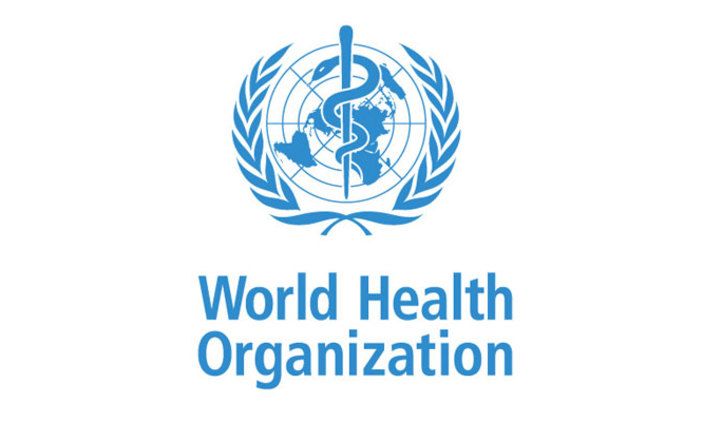In early May, the World Health Organization (WHO) released its updated document, Bacterial Priority Pathogens List (BPPL) 2024, which details 24 pathogens across 15 families of antibiotic-resistant bacteria. The list is grouped into critical, high, and medium categories for prioritization for public health officials, clinicians, and other stakeholders to be aware of and treat accordingly. In addition, the list provides guidance on the development of new and necessary treatments to stop the spread of antimicrobial resistance (AMR).1
“By mapping the global burden of drug-resistant bacteria and assessing their impact on public health, this list is key to guiding investment and grappling with the antibiotics pipeline and access crisis," said Yukiko Nakatani, MD, PhD, WHO’s assistant director-general for Antimicrobial Resistance ad interim.1
Here is a breakdown of the pathogens and where they are on the priority list:
Critical priority:
- Acinetobacter baumannii, carbapenem-resistant;
- Enterobacterales, third-generation cephalosporin-resistant; and
- Enterobacterales, carbapenem-resistant;
- Mycobacterium tuberculosis, rifampicin-resistant (included after an independent analysis with parallel tailored criteria, and subsequent application of an adapted multi-criteria decision analysis matrix).
High priority:
- Salmonella Typhi, fluoroquinolone-resistant
- Shigella spp., fluoroquinolone-resistant
- Enterococcus faecium, vancomycin-resistant
- Pseudomonas aeruginosa, carbapenem-resistant
- Non-typhoidal Salmonella, fluoroquinolone-resistant
- Neisseria gonorrhoeae, third-generation cephalosporin- and/or fluoroquinolone-resistant
- Staphylococcus aureus, methicillin-resistant
Medium priority:
- Group A streptococci, macrolide-resistant
- Streptococcus pneumoniae, macrolide-resistant
- Haemophilus influenzae, ampicillin-resistant
- Group B streptococci, penicillin-resistant1
What You Need to Know
The list categorizes pathogens into critical, high, and medium priorities. Critical priority pathogens include highly resistant bacteria like carbapenem-resistant Acinetobacter baumannii and rifampicin-resistant Mycobacterium tuberculosis.
The distribution and impact of antimicrobial resistance (AMR) vary globally, with a pronounced burden in low- and middle-income countries (LMICs).
The BPPL reflects the evolving landscape of AMR, with notable changes from the 2017 list.
Critical Priorities
The critical priority section includes Acinetobacter baumannii, carbapenem-resistant. This drug-resistant pathogen has been particularly challenging to treat. In terms of potentially promising news, last May, the FDA has approved the antibiotic, sulbactam-durlobactam (Xacduro), for treatment of hospital-acquired bacterial pneumonia (HABP) and ventilator-associated bacterial pneumonia (VABP) caused by Acinetobacter baumannii for patients 18 years of age and older.2
In addition, other critical pathogens show they are resistant to last-resort antibiotics. For example, Mycobacterium tuberculosis (TB) can be resistant to the antibiotic, rifampicin.1
One estimate claimed that globally, half a million individuals develop rifampicin-resistant tuberculosis annually; with approximately 82% of these having multidrug-resistant (MDR) TB, and the approximate 18% remainder with rifampicin mono-resistant (RMR) TB.3
South Africa is a country with a very high incidence of MDR and RMR TB; and that their comparison of data from 2001-02 and 2012-14 reveals that MDR has remained at approximately 3% of cases, while RMR has increased from 0.5 to 1.8%, and now comprises 38% of all rifampicin-resistant tuberculosis.3
Gram-negative bacteria is apt to finding novel ways to resist treatment and can pass along genetic material that allows other bacteria to become drug resistant as well.
According to the WHO, high-priority pathogens, such as Salmonella and Shigella, are of particularly high burden in low- and middle-income countries (LMIC), along with Pseudomonas aeruginosa and Staphylococcus aureus, which pose significant challenges in health care settings.1
Other high priority pathogens, such as antibiotic-resistant Neisseria gonorrhoeae and Enterococcus faecium, present unique public health challenges, including persistent infections and resistance to multiple antibiotics, necessitating targeted research and public health interventions.1
Medium priority pathogens include Group A and B Streptococci (both new to the 2024 list), Streptococcus pneumoniae, and Haemophilus influenzae, which present a high disease burden. These pathogens require increased attention, especially in vulnerable populations including pediatric and elderly populations, particularly in resource-limited settings.1
Priorities from 2017 to 2024
Changes since 2017 reflect the dynamic nature of AMR, necessitating tailored interventions. Location plays a large role in the types of infections individuals may contract, and therefore can creates burdens locally. Building on the value of the BPPL as a global tool, tailoring the list to country and regional contexts can account for regional variations in pathogen distribution and the AMR burden. For example, antibiotic-resistant Mycoplasma genitalium, which is not included in the list, is an increasing concern in some parts of the world.1
In addition, the 2024 list saw the removal of 5 pathogen-antibiotic combinations that were included in the 2017 list, and the addition of 4 new combinations. The fact that third-generation cephalosporin-resistant Enterobacterales are listed as a standalone item within the critical priority category emphasizes their burden and need for targeted interventions, especially in low- and middle-income countries.1
Carbapenem-resistant Pseudomonas aeruginosa (CRPA) infection moved from critical to high priority in the 2024 BPPL mirrors recent reports of decreases in global resistance.1
“Since the first Bacterial Priority Pathogens List was released in 2017, the threat of antimicrobial resistance has intensified, eroding the efficacy of numerous antibiotics and putting many of the gains of modern medicine at risk,” said Nakatani.1
References
1. WHO updates list of drug-resistant bacteria most threatening to human health. WHO news statement. May 17, 2023. Accessed June 4, 2024.
https://www.who.int/news/item/17-05-2024-who-updates-list-of-drug-resistant-bacteria-most-threatening-to-human-health
2.Parkinson J. FDA Approves Sulbactam-Durlobactam for Bacterial Pneumonia. Contagion. May 23, 2023. Accessed June 4, 2024.
https://www.contagionlive.com/view/fda-approves-sulbactam-durlobactam
3.Bender K. TB in Persons with HIV in South Africa Increasingly Rifampicin-Resistant. Contagion. August 30, 2021. Accessed June 4, 2024.
https://www.contagionlive.com/view/tb-in-persons-with-hiv-in-south-africa-increasingly-rifampicin-resistant

